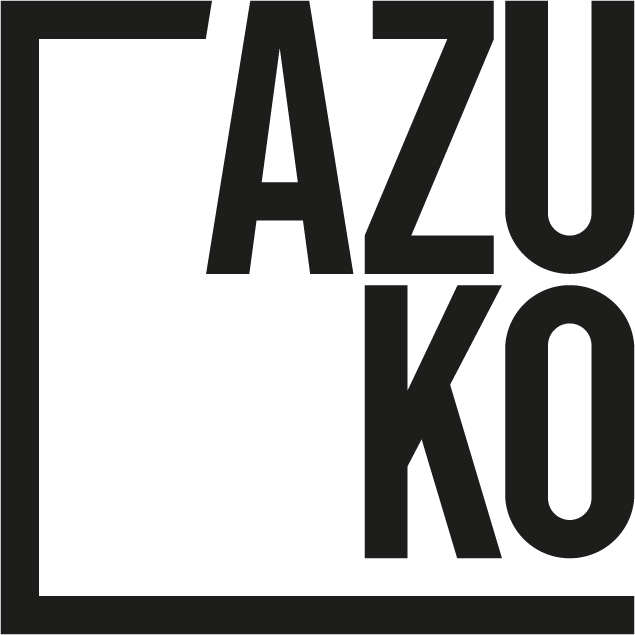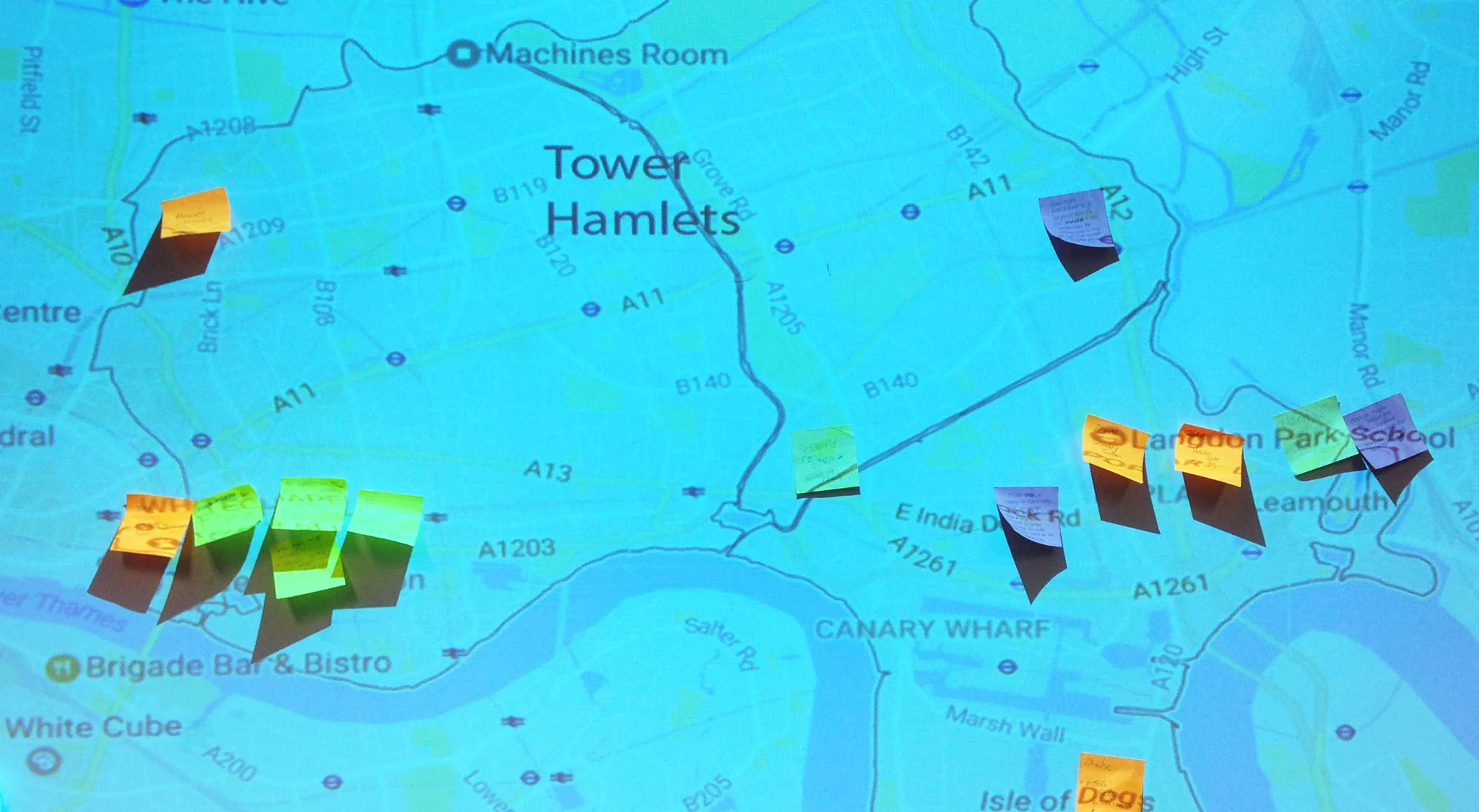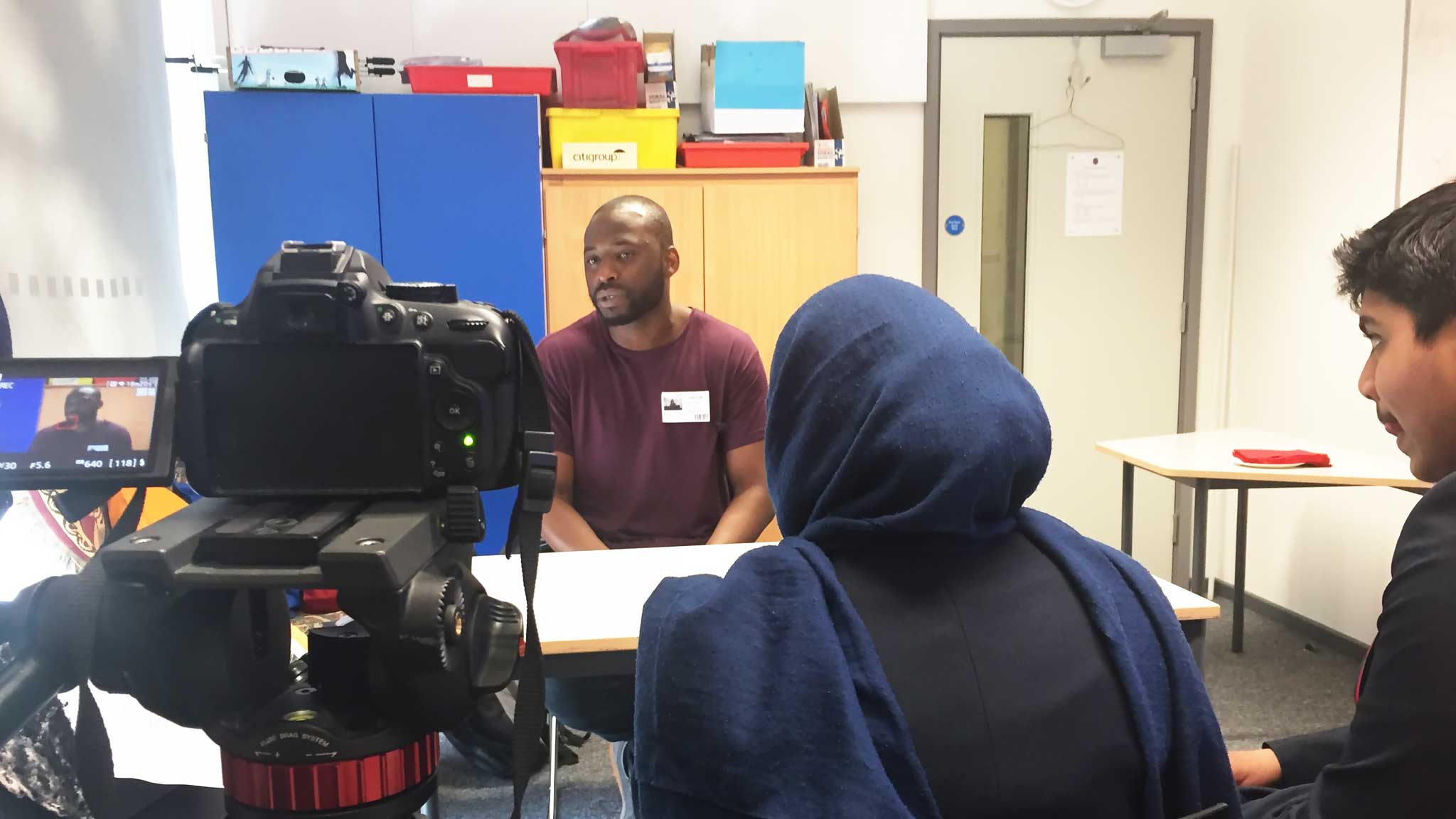One of the first things we do at AzuKo when working with groups, is to challenge our collective understanding of ourselves.
In research and design, the biggest challenge is always to bring assumptions and biases to the forefront as quickly as possible, and to make sure that those are present in the discussion about what is to be tested, what is to be made and how it will be made. This has been our approach when engaging with a student-led group at Langdon Park School in East London, as part of our A sense of place project.
One example of this is an exercise based on the sketch below. We ask, "please say anything about this picture that you see. What's apparent? Who are they? What are they doing? Where are they? What do you notice about their interaction? There are no wrong answers..."
Go ahead, try it for yourself before reading on.
Perhaps you said that this is a family or community gathered in a circle discussing something. They are inside a room. There are children, and a dog. Perhaps you've made a cultural observation about the man being the only one sitting on a chair - does this represent a hierarchy?
Those are all correct... from your point of view.
However, when the same question is asked to a group like the San Bushmen of the Kalahari Desert, there is one key difference and it's a simple one - these people are sitting outside. That dark area, which appears to be the shaded corner of the room, is actually a tree and that cube that you assumed was a window is actually a box perched on the top of the woman's head.
Both interpretations are correct, because ultimately it's just a sketch.
We asked the students why this is important to bear in mind when designing in the public's interest. They responded,
“... to make something that is useful for others, we need to understand that others see the world differently to us - that socially and culturally relevant designs start from a place of ignorance and humility.”
After just three months of working with these students, we've spoken with parents about challenges in the community, discovered and discussed a range of needs and strengths in the neighbourhood, developed empathy maps of potential beneficiaries, challenged why we do what we do and the process of finding meaning through talking to others, we've identified partners and undertaken in-depth interviews with potential end users.
We're now exploring relationships and conversations with local service providers, housing associations, tenants, data scientists and even maker communities such as Thingking, to address the cuts to public housing and social services, as well as the vulnerability of private tenants in the UK. Key insights from our research, include:
Help is often sought when it's too late - in crisis
Councils are difficult to engage
Social prescribers are becoming ubiquitous
Tenancy failure (evictions etc.) are expensive for housing associations
Social services are fragmented
The private rental market is not the public rental market
Every renter is at risk of eviction
Visit our project page for more insights.
Author: N. Ardaiz




